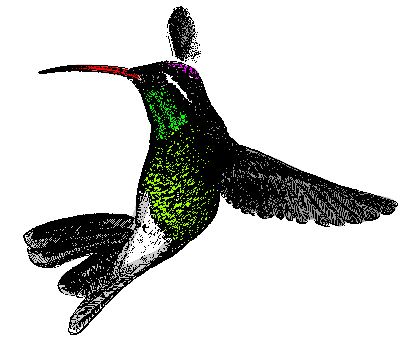Adapted from Jim Conrad's online book A Birding Trip through Mexico, This excerpt from "Above Xoconostle" in San Luis Potosí state
MIXED FLOCK COMPARISON
At Lake Arareko we had a mixed-species flock. Here we have another flock, this one made up of different species. One flock has about ten Bushtits, three or four Rufous-capped Warblers, four Solitary Vireos, and one or two each of Nashville Warblers, Black-and-white Warblers, and Townsend's Warblers. Two Blue-headed Vireos sing as lustily as on any spring day up north, and a certain noisy Rufous-capped Warbler seems to be the leader or cheerleader in the same way a certain White-breasted Nuthatch was the leader at Lake Arareko.
At Lake Arareko, Brown Creepers and White-breasted Nuthatches gleaned tree bark. Here Black-and-white Warblers do that job. Like Williamson's Sapsuckers and Northern Flickers at Lake Arareko, who orbited around the flock's perimeter giving the impression that they were only casually part of the flock, here Hepatic Tanagers and Eastern Towhees do the same thing.
Of course, not all the birds here are groupies. In mid-afternoon quietness a lone Nashville Warbler comes working through the oaks methodically foraging for tiny arthropods along the oaks' branches and on their leathery leaves. Any time during the day the White-eared Hummingbird might zip through, like the one shown below:

Everything about this in-between time of day feels sleepy and sluggish, but the little yellow warbler works at a fast pace with mechanical efficiency, with no wasted motions, no quick rests, and no perceivable changes in rhythm.